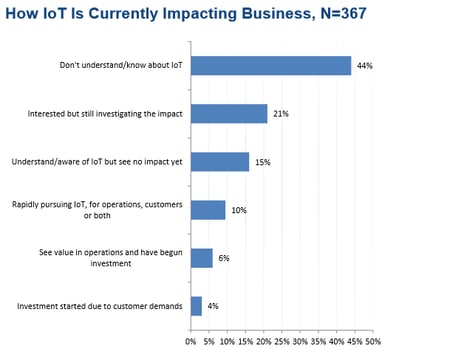 Divining actual product usage has been a blurry proposition at best for many manufacturers, who struggled to capture operating times and cycles, much less operating stresses and conditions. Many have had to make blanket assumptions (e.g. usage duty cycles), and hope that these assumptions and use cases held true.
Divining actual product usage has been a blurry proposition at best for many manufacturers, who struggled to capture operating times and cycles, much less operating stresses and conditions. Many have had to make blanket assumptions (e.g. usage duty cycles), and hope that these assumptions and use cases held true.
Click here to speak with Dan
In-Service Product Quality and IIoT
The IIoT opens the door to gain unprecedented connectivity with fielded products. The feedback and data from connected products can be an important asset in driving timely service, improving performance, offering new business models, and gaining insights that drive innovation.
However, transitioning from conventional products to connected products can come with a substantial price tag. In today’s intensely competitive economic climate, manufacturers making the move to connected products need to have confidence that their investment will result in success. While the Industrial Internet of Things (IIoT) can unlock new levels of product performance and brand loyalty if done properly with the right products; programs that miss the mark can give a nascent IIoT program a black eye with both customers and company executives.
Fortunately, in-use monitoring has been widely deployed for many years to detect performance and predict failures on-mission and safety-critical fielded products; such as elevators, aircraft engines, and defense programs. These innovators and early adopters paved the way for many concepts in IIoT today, including advancements in hardware, quality and reliability theory, systems engineering, and data analysis. They can provide us with many lessons applicable to IIoT.
What are the roadblocks that the early adopters uncovered and what are the right steps to take to improve the quality of a new connected product offering? Let’s start with the roadblocks.
The Roadblocks
Those making their first foray into connected products can improve the success of their IIoT programs by understanding the following hazards.
- Too many inputs and too much data – Having too much data is nearly as bad as not having enough. It’s easy to get excited about the promise of new technology. But overdoing it on early programs can result in data explosion that overwhelms IT systems as well as stakeholders.
- Too many alarms – Nothing guarantees organizational disengagement from a supposedly smart system than many “false positive” errors. False alarms are the spam of the IIoT world. They drown out the actual errors and condition stakeholders to ignore system feedback.
- Missed critical alarms – If false positives are frustrating, a false negative can be catastrophically damaging depending upon the system. No notification or late notification of a potential safety concern can cause product, personnel, environmental or secondary damage, and can bring the program into question.
- Unclear guidance – Feedback must be actionable, correct, and timely to the multiple stakeholders involved. Feedback that is unclear or requires time-consuming offline analysis substantially reduces system value.
- Unprepared Organization – connected products often require “connected organizations”. Organizations may need to work together in new and different ways to realize revenue and margin projections.
- Customer Backlash – Even in cases where the customer clearly has the most to gain through a newly connected product, there is a risk of customer backlash. Consumer privacy and security risks are substantial concerns carrying the specter of legal action. Additionally, there is a risk of Government charges. This US Federal Trade Commission Report provides a good overview of possible risks as well as the FTC’s recommendations.
- Perceived cost versus benefit – Ideally, the success of an IIoT-enabled product would be easily quantified. Cost for a connected product can be high, once infrastructure costs are considered. Costs are often easier to measure than success, particularly if success is tied to lagging and less correlated metrics such as customer satisfaction. Subjective comparison of cost versus success puts a program at risk. Without positive proof of value and clearly defined and accepted targets, a single large adverse event can undermine the program.
As you can see in the graph above, 10% respondents to LNS’s recent polls have indicated that they are beginning investment into IoT, and another 46% of the market has performed some investigations into the technology. This is a new technology that is generating a lot of interest in industry and technology providers, but industry has precious little experience deploying it due to its newness. Reference Leveraging the Internet of Things to Improve Product Quality: What You Need to Know for more information.
Over time, we’ll gain additional lessons learned, and I plan to focus on this and other IoT topics in my upcoming research. In the interim, we can benefit from lessons learned from smart connected systems deployed using the proprietary technological precursors to the IIoT. Some have driven excellent results but more than one program has been put in cold storage for the reasons we just reviewed.
Gain a year of free access to new research in our IoT Research Library by completing a survey.